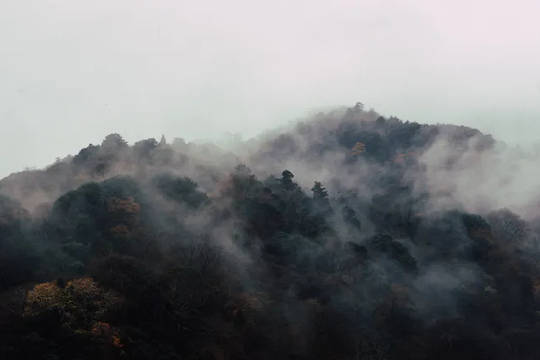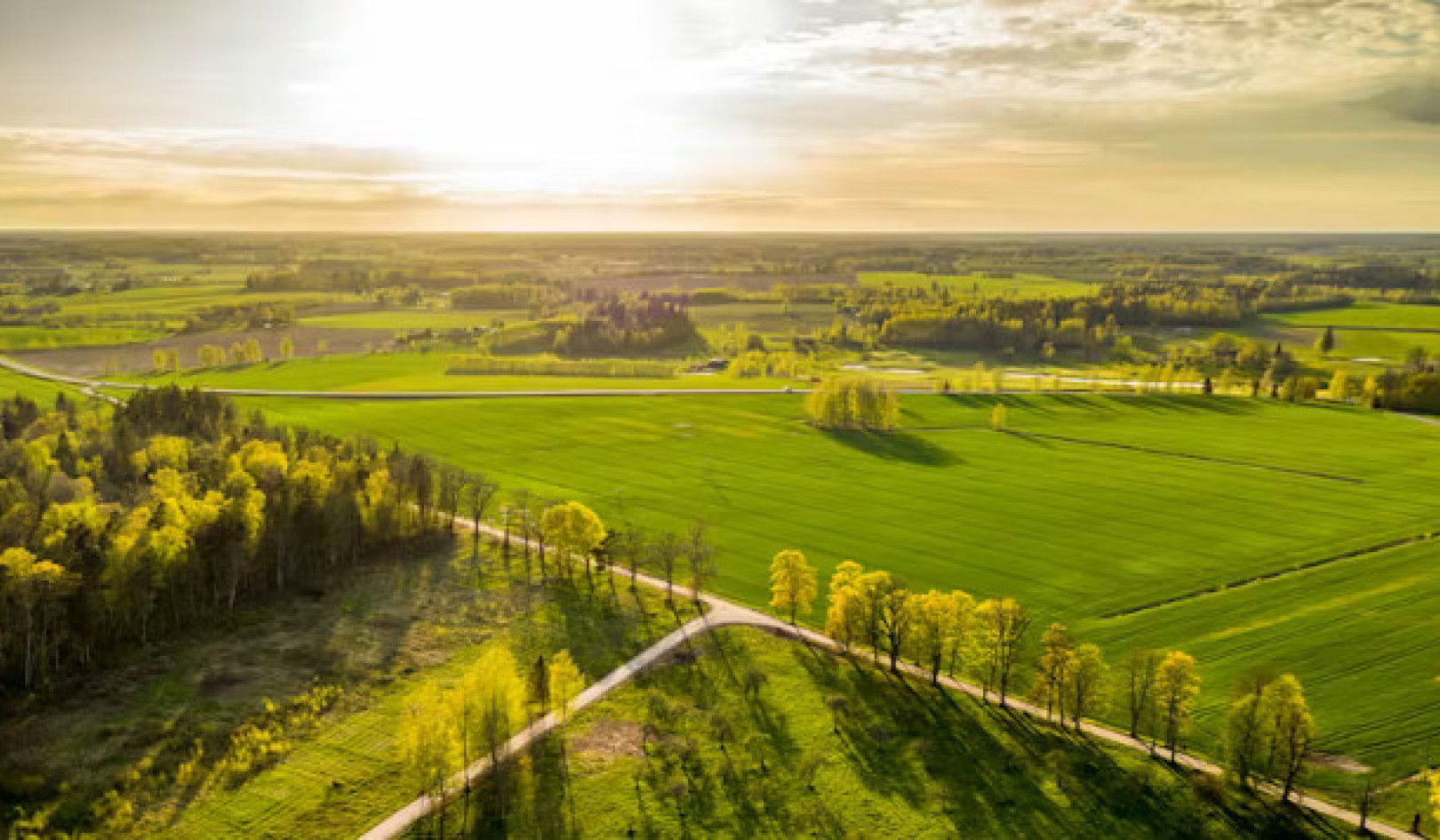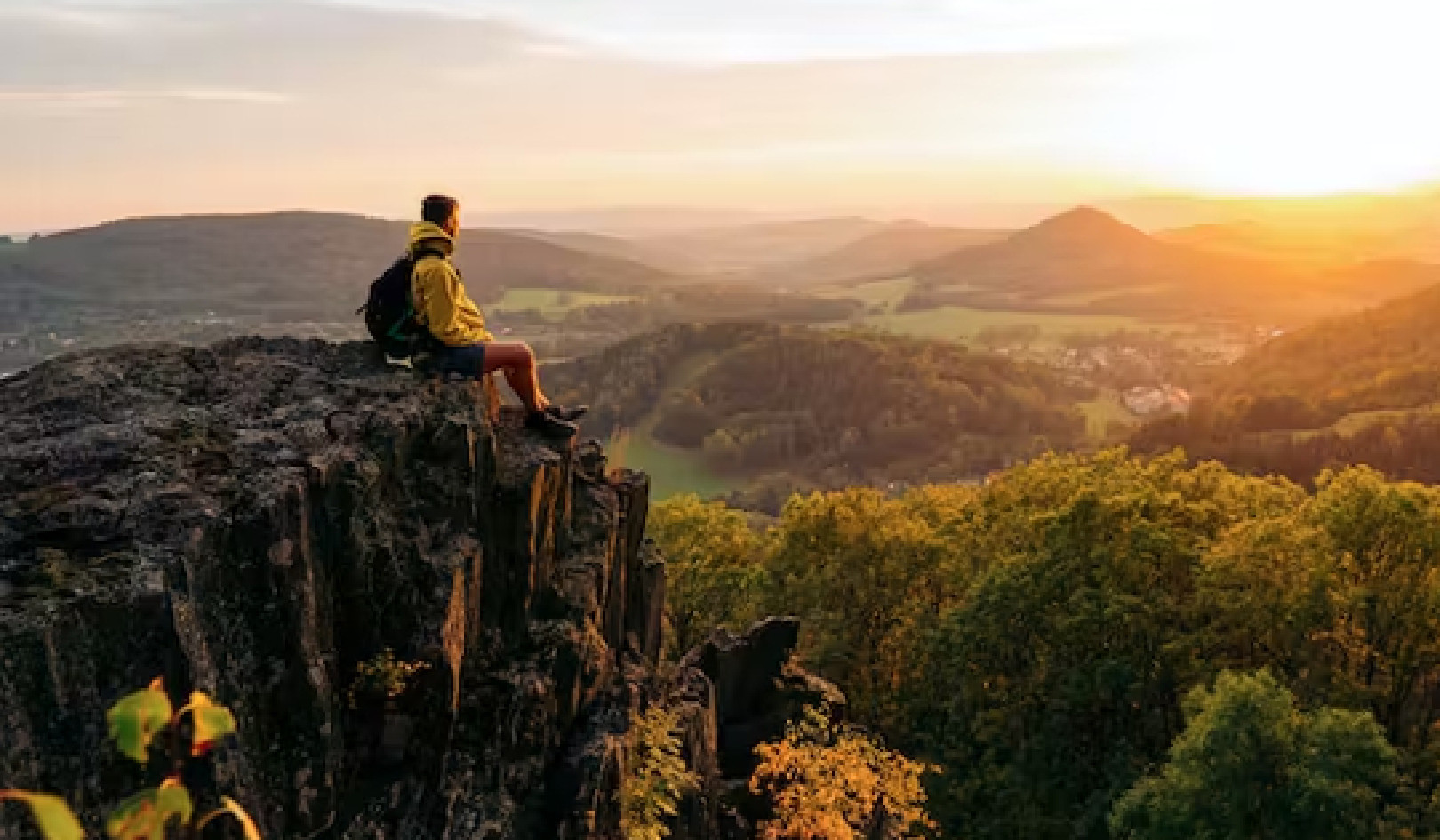
Jeremy Kieran/Unsplash, CC BY-SA
Forests are thought to be crucial in the fight against climate change – and with good reason. We’ve known for a long time that the extra CO? humans are putting in the atmosphere makes trees grow faster, taking a large portion of that CO? back out of the atmosphere and storing it in wood and soils.
But a recent finding that the world’s forests are on average getting “shorter and younger” could imply that the opposite is happening. Adding further confusion, another study recently found that young forests take up more CO? globally than older forests, perhaps suggesting that new trees planted today could offset our carbon sins more effectively than ancient woodland.
How does a world in which forests are getting younger and shorter fit with one where they are also growing faster and taking up more CO?? Are old or young forests more important for slowing climate change? We can answer these questions by thinking about the lifecycle of forest patches, the proportion of them of different ages and how they all respond to a changing environment.
The forest carbon budget
Let’s start by imagining the world before humans began clearing forests and burning fossil fuels.
In this world, trees that begin growing on open patches of ground grow relatively rapidly for their first several decades. The less successful trees are crowded out and die, but there’s much more growth than death overall, so there is a net removal of CO? from the atmosphere, locked away in new wood.
As trees get large two things generally happen. One, they become more vulnerable to other causes of death, such as storms, drought or lightning. Two, they may start to run out of nutrients or get too tall to transport water efficiently. As a result, their net uptake of CO? slows down and can approach zero.
Eventually, our patch of trees is disturbed by some big event, like a landslide or fire, killing the trees and opening space for the whole process to start again. The carbon in the dead trees is gradually returned to the atmosphere as they decompose.
The vast majority of the carbon is held in the patches of big, old trees. But in this pre-industrial world, the ability of these patches to continue taking up more carbon is weak. Most of the ongoing uptake is concentrated in the younger patches and is balanced by CO? losses from disturbed patches. The forest is carbon neutral.
 New trees absorb lots of carbon, old trees store more overall and dead trees shed their carbon to the atmosphere. Greg Rosenke/Unsplash, CC BY-SA
New trees absorb lots of carbon, old trees store more overall and dead trees shed their carbon to the atmosphere. Greg Rosenke/Unsplash, CC BY-SA
Now enter humans. The world today has a greater area of young patches of forest than we would naturally expect because historically, we have harvested forests for wood, or converted them to farmland, before allowing them to revert back to forest. Those clearances and harvests of old forests released a lot of CO?, but when they are allowed to regrow, the resulting young and relatively short forest will continue to remove CO? from the atmosphere until it regains its neutral state. In effect, we forced the forest to lend some CO? to the atmosphere and the atmosphere will eventually repay that debt, but not a molecule more.
But adding extra CO? into the atmosphere, as humans have done so recklessly since the dawn of the industrial revolution, changes the total amount of capital in the system.
And the forest has been taking its share of that capital. We know from controlled experiments that higher atmospheric CO? levels enable trees to grow faster. The extent to which the full effect is realised in real forests varies. But computer models and observations agree that faster tree growth due to elevated CO? in the atmosphere is currently causing a large carbon uptake. So, more CO? in the atmosphere is causing both young and old patches of forest to take up CO?, and this uptake is larger than that caused by previously felled forests regrowing.
The effect of climate change
But the implications of climate change are quite different. All else being equal, warming tends to increase the likelihood of death among trees, from drought, wildfire or insect outbreaks. This will lower the average age of trees as we move into the future. But, in this case, that younger age does not have a loan-like effect on CO?. Those young patches of trees may take up CO? more strongly than the older patches they replace, but this is more than countered by the increased rate of death. The capacity of the forest to store carbon has been reduced. Rather than the forest loaning CO? to the atmosphere, it’s been forced to make a donation.
So increased tree growth from CO? and increased death from warming are in competition. In the tropics at least, increased growth is still outstripping increased mortality, meaning that these forests continue to take up huge amounts of carbon. But the gap is narrowing. If that uptake continues to slow, it would mean more of our CO? emissions stay in the atmosphere, accelerating climate change.
Overall, both young and old forests play important roles in slowing climate change. Both are taking up CO?, primarily because there is more CO? about. Young forests take up a bit more, but this is largely an accident of history. The extra carbon uptake we get from having a relatively youthful forest will diminish as that forest ages. We can plant new forests to try to generate further uptake, but space is limited.
But it’s important to separate the question of uptake from that of storage. The world’s big, old forests store an enormous amount of carbon, keeping it out of the atmosphere, and will continue to do so, even if their net CO? uptake decreases. So long as they are not cut down or burned to ashes, that is.![]()
About the Author
Tom Pugh, Reader in Biosphere-Atmosphere Exchange, University of Birmingham
This article is republished from The Conversation under a Creative Commons license. Read the original article.
Related Books
Drawdown: The Most Comprehensive Plan Ever Proposed to Reverse Global Warming
by Paul Hawken and Tom Steyer In the face of widespread fear and apathy, an international coalition of researchers, professionals, and scientists have come together to offer a set of realistic and bold solutions to climate change. One hundred techniques and practices are described here—some are well known; some you may have never heard of. They range from clean energy to educating girls in lower-income countries to land use practices that pull carbon out of the air. The solutions exist, are economically viable, and communities throughout the world are currently enacting them with skill and determination. Available On Amazon
In the face of widespread fear and apathy, an international coalition of researchers, professionals, and scientists have come together to offer a set of realistic and bold solutions to climate change. One hundred techniques and practices are described here—some are well known; some you may have never heard of. They range from clean energy to educating girls in lower-income countries to land use practices that pull carbon out of the air. The solutions exist, are economically viable, and communities throughout the world are currently enacting them with skill and determination. Available On Amazon
Designing Climate Solutions: A Policy Guide for Low-Carbon Energy
by Hal Harvey, Robbie Orvis, Jeffrey Rissman With the effects of climate change already upon us, the need to cut global greenhouse gas emissions is nothing less than urgent. It’s a daunting challenge, but the technologies and strategies to meet it exist today. A small set of energy policies, designed and implemented well, can put us on the path to a low carbon future. Energy systems are large and complex, so energy policy must be focused and cost-effective. One-size-fits-all approaches simply won’t get the job done. Policymakers need a clear, comprehensive resource that outlines the energy policies that will have the biggest impact on our climate future, and describes how to design these policies well. Available On Amazon
With the effects of climate change already upon us, the need to cut global greenhouse gas emissions is nothing less than urgent. It’s a daunting challenge, but the technologies and strategies to meet it exist today. A small set of energy policies, designed and implemented well, can put us on the path to a low carbon future. Energy systems are large and complex, so energy policy must be focused and cost-effective. One-size-fits-all approaches simply won’t get the job done. Policymakers need a clear, comprehensive resource that outlines the energy policies that will have the biggest impact on our climate future, and describes how to design these policies well. Available On Amazon
This Changes Everything: Capitalism vs. The Climate
by Naomi Klein In This Changes Everything Naomi Klein argues that climate change isn’t just another issue to be neatly filed between taxes and health care. It’s an alarm that calls us to fix an economic system that is already failing us in many ways. Klein meticulously builds the case for how massively reducing our greenhouse emissions is our best chance to simultaneously reduce gaping inequalities, re-imagine our broken democracies, and rebuild our gutted local economies. She exposes the ideological desperation of the climate-change deniers, the messianic delusions of the would-be geoengineers, and the tragic defeatism of too many mainstream green initiatives. And she demonstrates precisely why the market has not—and cannot—fix the climate crisis but will instead make things worse, with ever more extreme and ecologically damaging extraction methods, accompanied by rampant disaster capitalism. Available On Amazon
In This Changes Everything Naomi Klein argues that climate change isn’t just another issue to be neatly filed between taxes and health care. It’s an alarm that calls us to fix an economic system that is already failing us in many ways. Klein meticulously builds the case for how massively reducing our greenhouse emissions is our best chance to simultaneously reduce gaping inequalities, re-imagine our broken democracies, and rebuild our gutted local economies. She exposes the ideological desperation of the climate-change deniers, the messianic delusions of the would-be geoengineers, and the tragic defeatism of too many mainstream green initiatives. And she demonstrates precisely why the market has not—and cannot—fix the climate crisis but will instead make things worse, with ever more extreme and ecologically damaging extraction methods, accompanied by rampant disaster capitalism. Available On Amazon
From The Publisher:
Purchases on Amazon go to defray the cost of bringing you InnerSelf.comelf.com, MightyNatural.com, and ClimateImpactNews.com at no cost and without advertisers that track your browsing habits. Even if you click on a link but don't buy these selected products, anything else you buy in that same visit on Amazon pays us a small commission. There is no additional cost to you, so please contribute to the effort. You can also use this link to use to Amazon at any time so you can help support our efforts.
























